Oxford University Press's Blog, page 730
December 3, 2014
Looking beyond the Scottish referendum
In British constitutional history, 2014 will undoubtedly be remembered for one thing and one thing only — the Scottish independence referendum. ‘Should Scotland be an independent country?’ was the deceptively simple question that veiled a far more complex reality. This complexity was revealed in the pre-election build-up as the three main parties offered concession upon concession in order to head-off a ‘Yes’ vote. As such, ‘No’ did not mean ‘no’ but a preference for ‘devo-max’ and a model of devolution that was ‘as close to a federal state as you can be in a country where one nation is 85% of the population’ as Gordon Brown put it. But what did the Scottish independence referendum really expose about the changing nature of politics?
This week’s recommendations by the Smith Commission on Scottish devolution (full control over income tax rates and bands, devolution of some element of VAT plus Air Passenger Duty, the devolution of responsibility for some welfare benefits, etc.) represents the latest but not the final stage in the post-referendum politics of devolution in the UK. Indeed, just hours after the Smith Commission had been published more than 100 English councils demanded more powers — ‘Its England’s turn now’ — and David Cameron committed the coalition government to publish an English votes plan by Christmas. English votes for English laws are not quite the same as the devolution of powers that is demanded by local authorities from Cornwall to Cumbria but it does suggest a need to stop — step back — and reflect upon the broader implications of the Scottish independence referendum. I’ve attempted to answer five questions below to help tease out some of the broader issues.
What did we learn?We learnt a huge amount about democratic energy and participatory zeal. Doom and gloom about democratic apathy and public disengagement from politics was replaced with a vitality and verve that was almost tangible as every school hall, pub, and youth club was filled with debates about the pros and cons of independence. The lesson for the political parties and politicians is that public will engage in politics when they feel they have been given a meaningful role, a real choice, and a say in matters such as their country’s fiscal policy. The statistics speak for themselves: 4,283,392 people voted (85% turnout) and as Robert Crawford hoped, Scotland has emerged as a stronger country with an intensified (and globally admired) sense of itself as a democratic place.
 Tenement block in Leith with both YES and NO referendum posters and Union flag. By Brian McNeil CC-BY-SA-3.0 via Wikimedia Commons. What is the key challenge?
Tenement block in Leith with both YES and NO referendum posters and Union flag. By Brian McNeil CC-BY-SA-3.0 via Wikimedia Commons. What is the key challenge? The Scottish independence referendum breathed new life into politics and the question for all the main political parties is how to sustain and channel that democratic energy in other ways and across the UK. This won’t be easy as the Scottish referendum tapped into a number of very deep historical and cultural issues in order to generate its energy but there must be some way to harness and replicate the civic energy and civic engagement that Scotland displayed with such pride. Put slightly differently, if the main political parties cannot offer some of the hope and belief that energized the referendum campaign on both sides then the more extreme populist parties will feast upon the political frustrations that currently exist.
Where does this leave us now?Confused and divided. Confused in the sense of lacking any real understanding of what the United Kingdom is any more, both constitutionally and politically; divided in the sense that there is no shared agreement amongst the main parties about what is to be done. To some extent — and as James Mitchell highlighted, this is not a new situation for the UK but I would argue that the situation is now more extreme. It’s increasingly a unitary state in the very loosest sense of the term but the parties are divided on the best way to deliver a new sense of equilibrium within the system. More devolution to Scotland unleashes similar demands from other parts of the UK but the culture of Westminster and Whitehall lacks the capacity to deal with the constitution in a ‘joined-up’ manner. The current situation is therefore one of classically British ad hoc, unprincipled muddling through — with the recent devolution agreement between the Chancellor of the Exchequer and the leaders of the Greater Manchester Combined Authority being a case in point.
Is the post-referendum UK experiencing a ‘constitutional moment’?Yes, it probably is but this is the problem. The Scottish independence referendum was a ‘democratic moment’ in the sense that there was a bottom-up pressure for change that was accommodated by the democratic process. The post-referendum discussions and debates have, however, been undertaken at an elite level and the most telling evidence of this comes not in the form of the Smith Commission but in the work of William Hague’s committee on ‘a fair settlement that applies to all parts of the UK’. When announcing this committee the Prime Minister, David Cameron, announced that ‘it is also important we have wider civic engagement about how to improve governance in our United Kingdom…we will say more about this in the coming days’. But so far these plans for ‘wider civic engagement’ have remained undisclosed. The idea of a national Citizens Assembly has been rejected and as a result the UK is experiencing an elite-driven top-down ‘constitutional moment’ but certainly not a ‘bottom-up public-led’ democratic moment.
What is the big issue that no one is talking about?One of the most positive elements of the Scottish independence referendum had nothing to do with the quality of the debate, the inclusion of a cross-section of society, or the level or turnout. It had everything to do with the simple fact that two countries were able to decide upon their mutual futures through peaceful and democratic means. This was an independence referendum that was not driven by war, crisis or disaster; nor did it demand battle or bloodshed; and the results were peacefully accepted with grace and goodwill on both sides. In a world that too often seems bloodied and bowed by territorial politics maybe this is the ‘big issue’ that we should be talking about and learning from.
Heading image: Flags outside Parliament by Calum Hutchinson. CC-BY-SA-2.5 via Wikimedia Commons.
The post Looking beyond the Scottish referendum appeared first on OUPblog.









 Related StoriesLooking back at Scotland in 2014The Oxford Place of the Year 2014 is…The Dis-United Kingdom
Related StoriesLooking back at Scotland in 2014The Oxford Place of the Year 2014 is…The Dis-United Kingdom
December 2, 2014
Looking back at Scotland in 2014
With the announcement of Scotland as Place of the Year for 2014, we’re looking back at some of the key events that put Scotland in the news this year. News of the Scottish Independence Referendum dominated the headlines, and politicians, economists, and analysts discussed and debated Scotland’s role both in Europe and on the global market. However, a number of other important events also put Scotland in the news this year, including playing host to multiple sporting events, passing a bill that will legalize marriage in December 2014, and seeing the first female First Minister of Scotland take office. Here is a look back at Scotland in 2014, in pictures.

February 2014: Scottish Parliament votes in favor of same-sex marriage
In February 2014, Scottish Parliament votes overwhelmingly in favor of a bill that would legalize same-sex marriage. The bill received Royal Assent on 12 March, and will take effect in December 2014. (Image: Rainbow flag breeze by Benson Kua. CC-BY-SA-2.0 via Wikimedia Commons.
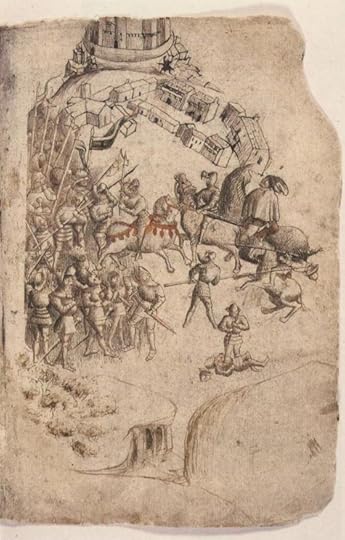
June 2014: the 700th anniversary of the Battle of Bannockburn
June 2014 marked the 700th anniversary of the Battle of Bannockburn, which saw a victory for Scotland in the First War of Scottish Independence in 1314. (Image: Battle of Bannockburn from a 1440s manuscript of Walter Bower’s Scotichronicon. Public domain via Wikimedia Commons.)

July-August 2014: the 2014 Commonwealth Games are held in Glasgow
The XX Commonwealth Games took place in July and August 2014 in Glasgow. Athletes and fans from all over the world descended on the city to compete for and cheer on their teams. Teams with the highest medal count were England, Australia, and Canada, with Scotland coming fourth. (Image: Commonwealth Games 2014 by Graham Campbell. CC-BY-SA-2.0 via Wikimedia Commons.)

September 2014: the Scottish Independence Referendum is held
The Scottish Independence Referendum, which took place in September 2014, asked the question “should Scotland be an independent country?” About 45% of the country said “yes”. (Image: A Scottish Independence Referendum campaign sign at Eyemouth. ©Walter Baxter. CC BY-SA 2.0 via Geograph.org.uk.)
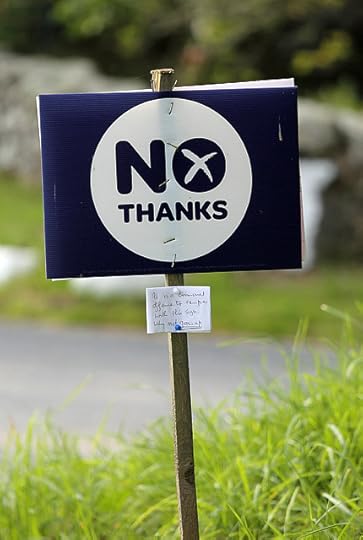
September 2014: Scottish residents vote "no" in the Scottish Independence Referendum
About 55% of the Scottish population voted “no” in the Referendum. (Image: A No Thanks sign at Clovenfords. ©Walter Baxter. CC BY-SA 2.0 via Geograph.org.uk.)
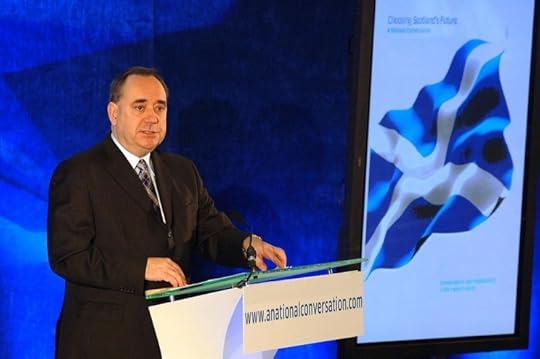
September 2014: Alex Salmond resigns
After Scottish residents vote “no” in the referendum, Alex Salmond announced his resignation as First Minister of Scotland and leader of the Scottish National Party. (Image: Alex Salmond in 2007 by the Scottish Government. CC-BY-2.0 via Wikimedia Commons.)

September 2014: the Ryder Cup takes place at Gleneagles
Scotland held a second major international sporting event in 2014, the 40th Ryder Cup, which was held at the Gleneagles Hotel near Auchterarder in Perthshire. (Image: Gleneagles Hotel and grounds by Simon Ledingham. CC-BY-SA-2.0 via Wikimedia Commons.)
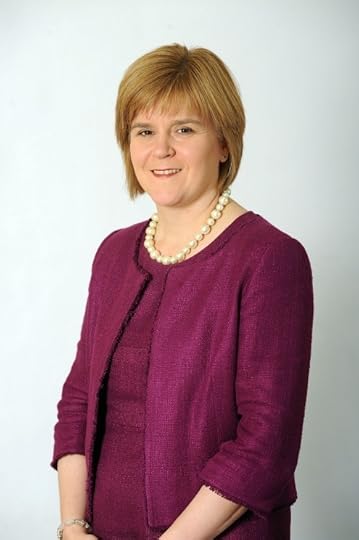
November 2014: Nicola Sturgeon succeeds Alex Salmond
Nicola Sturgeon succeeded Alex Salmond as leader of the Scottish National Party and First Minister of Scotland after she was the only candidate to put their name forward in the party’s leadership election. She is the the first woman to hold either of these positions. (Image: Nicola Sturgeon by The Scottish Government. Open Government Licence v1.0 via Wikimedia Commons.

December 2014: Dundee is named the UK's first UNESCO City of Design
In December 2014, Dundee became the UK’s first UNESCO City of Design, for its “diverse contributions to fields including medical research, comics, and video games,” according to BBC News. (Image: Midsummer night by Val Vannet. CC-BY-SA-2.0 via Wikimedia Commons.
Heading image: Flag of Scotland by Cayetano. CC-BY-SA-2.0 via Wikimedia Commons.
The post Looking back at Scotland in 2014 appeared first on OUPblog.









 Related StoriesPlace of the Year 2014 nominee spotlight: Scotland [quiz]Announcing the Place of the Year 2014 shortlist: Vote for your pickThe Oxford Place of the Year 2014 is…
Related StoriesPlace of the Year 2014 nominee spotlight: Scotland [quiz]Announcing the Place of the Year 2014 shortlist: Vote for your pickThe Oxford Place of the Year 2014 is…
Do you have what it takes to be extreme? [quiz]
Whether it’s for the thrill of an extreme sport like climbing Mount Everest or sky diving from a plane high above the ground, or for the allure of a job that involves the likes of exploring space or traveling the seas, some people naturally have what it takes to face the challenges of life in the extreme. Although there is no one perfect equation that leads to a person able to handle extreme environments, we pulled together the quiz below based on the ideas and information from Extreme: Why Some People Thrive at the Limits by Emma Barrett and Paul Martin. Try your hand at the questions below, and see if you have what it takes to be the next Amelia Earhart or Buzz Aldrin.
Get Started!
Your Score:
Your Ranking:
Featured headline image: Mt. Huayna Potosi. Photo by Justin Vidamo. CC BY 2.0 via Flickr.
The post Do you have what it takes to be extreme? [quiz] appeared first on OUPblog.









 Related StoriesTest your knowledge of neuroanatomical terminologyFive lessons from extreme placesRemembering the original On the Town during World War II
Related StoriesTest your knowledge of neuroanatomical terminologyFive lessons from extreme placesRemembering the original On the Town during World War II
How has World War I impacted United States immigration trends?
Where did the first Chinatown originate, and how many exist across the country? Where do the majority of the country’s immigrant populations currently reside? Andrew Beveridge, Co-Founder and CEO of census data mapping program Social Explorer, discusses the effects of the First World War on American nativity demographics. Analyzing native and foreign-born populations both during and after the War, particularly around the time of the 1917 Immigration Act, Beveridge shows how you can follow immigration trends over time up to the present day.
Featured image credit: Jacob Lawrence, 1917-2000, Artist (NARA record: 1981548) (U.S. National Archives and Records Administration). Public domain via Wikimedia Commons
The post How has World War I impacted United States immigration trends? appeared first on OUPblog.









 Related StoriesIncome inequality in the United StatesRemembering the original On the Town during World War IIOne second in the life of an artist
Related StoriesIncome inequality in the United StatesRemembering the original On the Town during World War IIOne second in the life of an artist
Remembering the original On the Town during World War II
A stunning new production of On the Town, directed by John Rando, opened in October at the Lyric Theatre on Broadway. It transports a viewer back to the golden age of American musical theater, when highly skilled orchestras delivered a robust sound while extended segments of dance were central to telling the story.
Carol J. Oja’s Bernstein Meets Broadway: Collaborative Art in a Time of War explores the very first production of On the Town, which opened in December 1944, towards the end of World War II. It marked the Broadway debut of a soon-to-be-famous creative team, with Leonard Bernstein as composer, Betty Comden and Adolph Green as lyricists and book-writers, and Jerome Robbins as choreographer. There were many audacities to this youthful production. The star was the gorgeous Japanese-American dancer Sono Osato, even as her father was among the Japanese nationals interned in the United States. The stage manager was Peggy Clark, who was among the earliest women to serve in that role on Broadway. The cast included six African Americans, who were intentionally presented as part of a multicultural citizenry, avoiding pernicious racial stereotypes of the era.
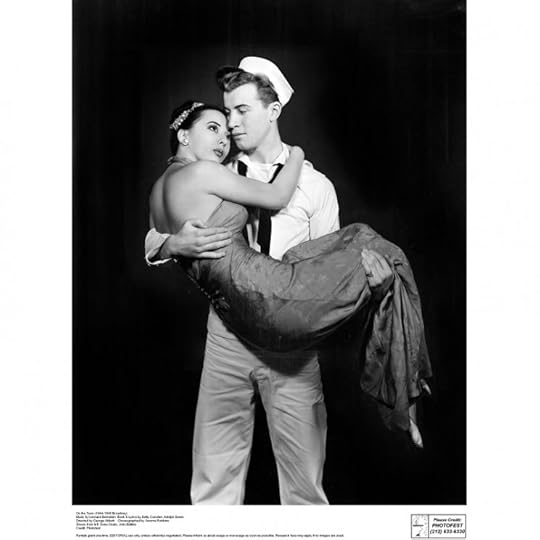
Sono Osato and John Battles
When Sono Osato starred in the original production of On the Town, her leading man was the white actor John Battles. Many states had laws against ‘miscegenation’ at the time.
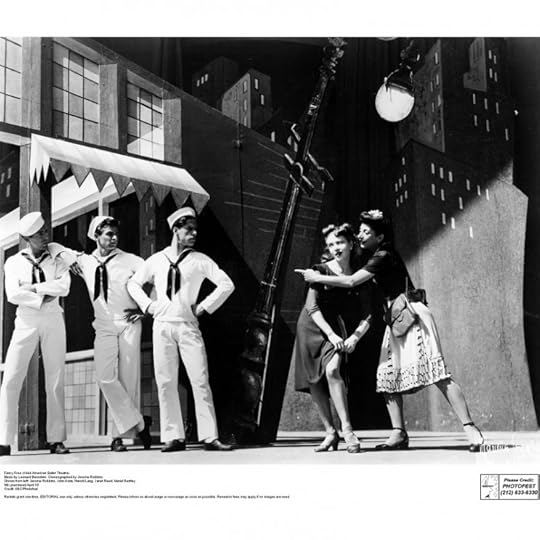
Fancy Free
The inspiration for On the Town came from the ballet Fancy Free, which debuted in April 1944, eight months before the Broadway show opened. The ballet focused on three sailors on shore leave, who were competing for the attention of two women in a bar. Leonard Bernstein was the composer and Jerome Robbins the choreographer, as well as one of the lead dancers. Robbins, Harold Lang, John Kriza, Janet Reed, and Muriel Bentley are captured in an action shot for Fancy Free, in front of the original set by Oliver Smith.
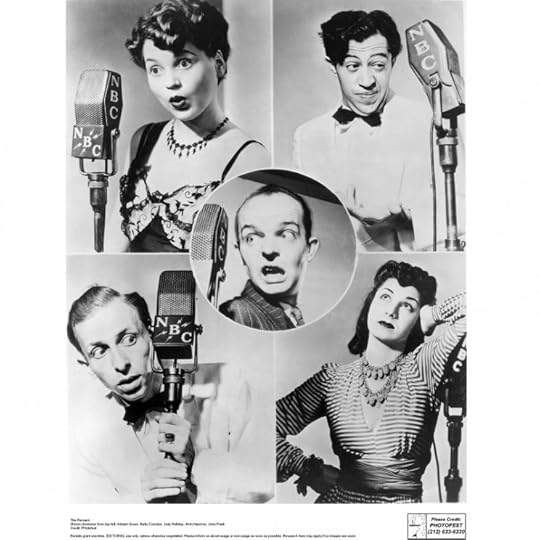
The Revuers
Before Betty Comden and Adolph Green became famous for their work on stage and screen, they were part of a comedy team called The Revuers. Occasionally, Bernstein was their pianist. In 1940, the group had a regular program on NBC radio, where they performed original skits that were essentially mini-musicals. This promotional photograph shows (from top left) Judy Tuvim (later to gain fame as Judy Holliday), Adolph Green, Betty Comden, John Frank, and (in the center) Alvin Hammer.
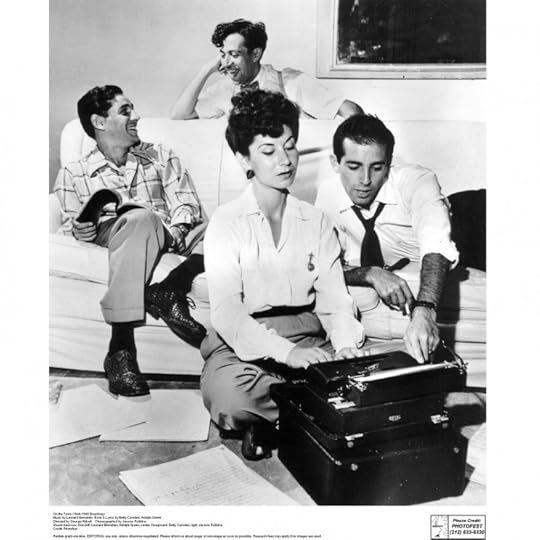
At work on On the Town
On the Town fused the story line of Fancy Free with comedic sketches by The Revuers. As Leonard Bernstein, Adolph Green, Betty Comden, and Jerome Robbins worked on the show, they clearly had a lot of fun.
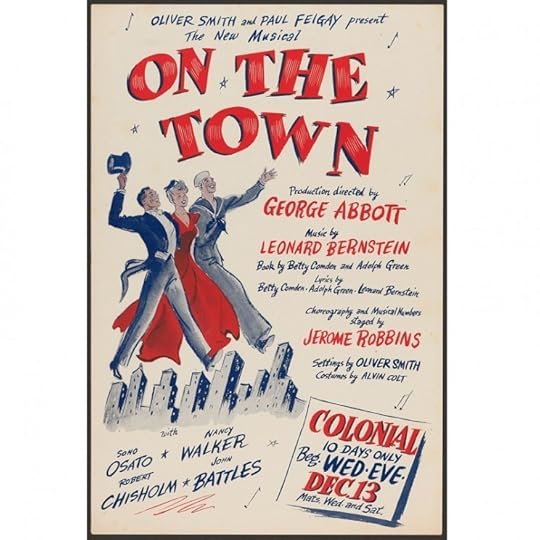
On the Town Flyer
The preview of On the Town opened at Boston’s Colonial Theater in mid-December 1944. In the 1940s, an out-of-town preview was standard practice for a new Broadway show, offering a creative space at a safe distance from New York critics. Considerable revising took place during previews.
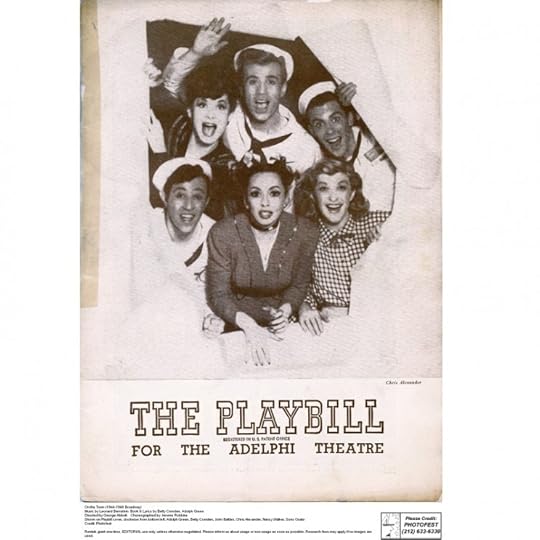
On the Town Playbill
On the Town opened at the Adelphi Theatre in New York City on 28 December 1944. The six principals were pictured on the cover of The Playbill (clockwise from bottom center): Sono Osato, Adolph Green, Betty Comden, John Battles, Cris Alexander, and Nancy Walker.
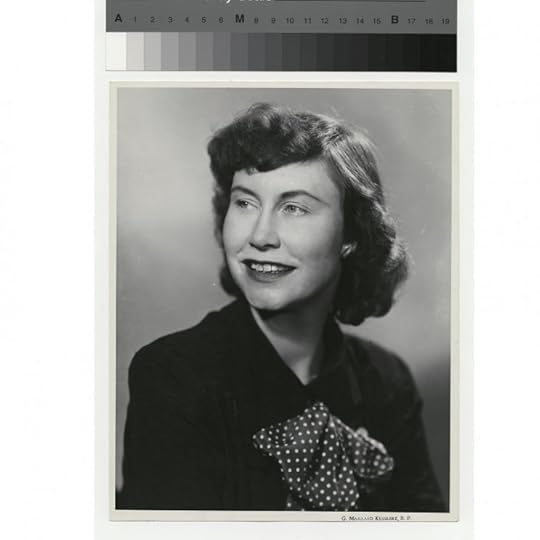
Peggy Clark
When Peggy Clark became stage manager of On the Town, she did so at a time when few (if any) women held a comparable position on Broadway. Clark later gained fame as a theatrical lighting designer.

Sono Osato, 1945
A gifted dancer of exceptional beauty, Sono Osato began her career with the Ballet Russe de Monte Carlo. During the early 1940s, when the troupe settled in New York City because of the war, she also did some fashion modeling. Her first Broadway show was One Touch of Venus (Kurt Weill, Ogden Nash, and S. J. Perlman; 1943), where she had a secondary role. Then came On the Town. (Photograph from the 1940s by G. Maillard Kessière. Billy Rose Theatre Division, The New York Public Library for the Performing Arts, Astor, Lenox, and Tilden Foundations. Undated Photograph. Photofest Digital Archive.)
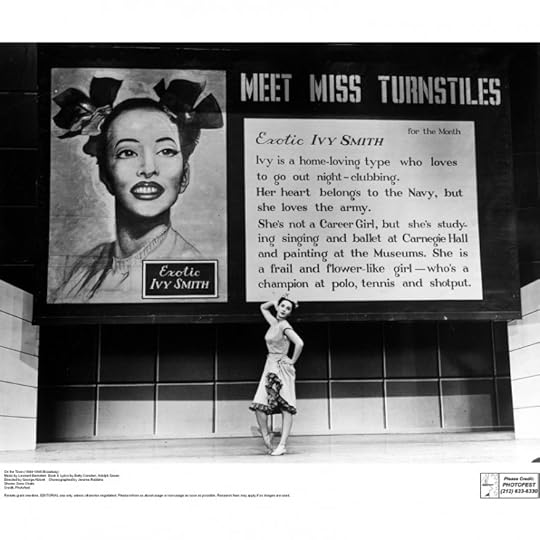
On the Town Stage 3
In “The Presentation of Miss Turnstiles” (Act I, Scene 4), Ivy Smith – the character portrayed by Sono Osato – appears on stage for the first time. In Oliver Smith’s set for the original production of On the Town, Osato is presented as “exotic,” and she dances in front of a stylization of her own photograph. (Photofest Digital Archive)
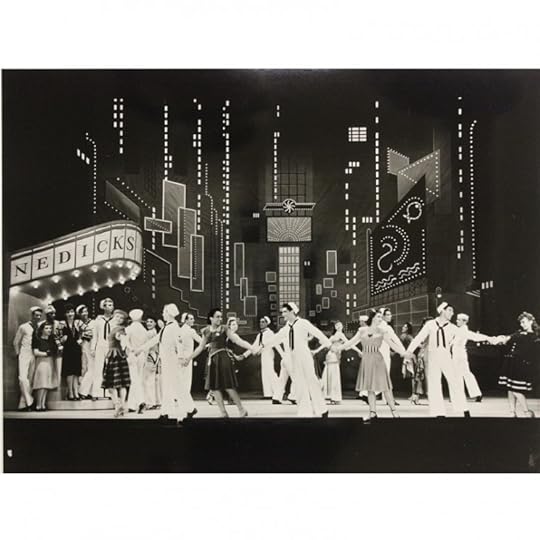
Times Square Ballet
At the close of the first act of On the Town, the entire dance chorus joins in for the jubilant “Times Square Ballet.” This photograph from a souvenir program for the show gives a sense of the mixed-race cast. While the number of black dancers was small, blacks and whites held hands on stage, which defied racial practices of the day. (Peggy Clark Collection, Music Division, Library of Congress.)
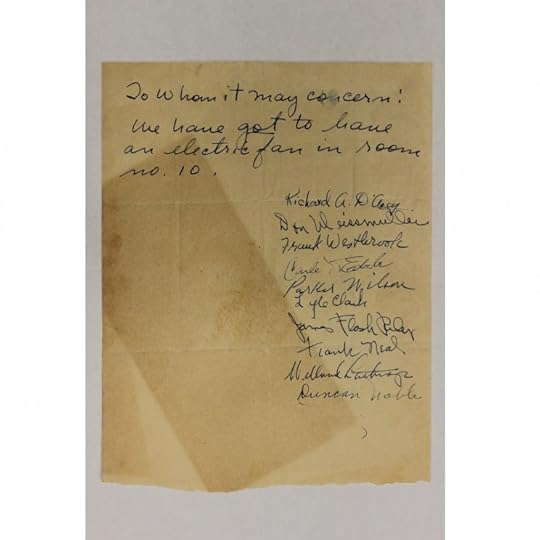
Letter from the dancers
As the heat of summer descended on the original production of On the Town, male dancers in the show sent a note to Peggy Clark requesting an electric fan in their dressing room. Clearly there were mixed-race dressing rooms, since the African American dancers James Flash Riley and Frank Neal signed the note together with their white colleagues. (Peggy Clark Collection, Music Division, Library of Congress. ©Douglas Clark.)
Headline image credit: Theater spotlights. CC0 via Pixabay.
The post Remembering the original On the Town during World War II appeared first on OUPblog.









 Related StoriesOn the Town and the long march for civil rights in performanceThe teenage exploits of a future celebrityOn the Town, flashpoint for racial distress
Related StoriesOn the Town and the long march for civil rights in performanceThe teenage exploits of a future celebrityOn the Town, flashpoint for racial distress
Up in the air over taxing frequent flyer benefits
Imagine you’ve been on an out-of-town business trip. Your employer paid for your airfare, but allowed you to keep the frequent flyer points generated by the trip. Some time later, you redeem the points (perhaps along with additional points generated by other business trips) for a free flight to a vacation destination. You might wonder, “Do I have taxable income, either when the points are credited to my account or when I redeem the points for personal travel?”
Under the US federal income tax, it is reasonably clear that there is taxable income in this story, although there is plenty of room to argue about the timing of the taxable event, or that the fair market value (of either the points or the later reward) should be included in income.
Despite the technical “taxability” of employees who benefit from frequent flyer programs, the Internal Revenue Service (IRS) announced a “don’t-ask-don’t-tell policy” in 2002, which stated that “the IRS will not assert that any taxpayer has understated his federal tax liability by reason of the receipt or personal use of frequent flyer miles … attributable to the taxpayer’s business travel.”
Seemingly faced with problems of valuation, enforcement, and taxpayer understanding, the IRS simply declared that it had no intention of enforcing the law, rather than dealing with the issues that would have been created by a serious attempt to administer the taxation of frequent flyer benefits.
“Seemingly faced with problems of valuation, enforcement, and taxpayer understanding, the IRS simply declared that it had no intention of enforcing the law.”
Twelve years later, the 2002 announcement still accurately reflects the supine position of the IRS. Regardless of one’s views on the merits of either taxing or not taxing employee-retained frequent flyer benefits, from a rule-of-law perspective, it is troubling that this question has been resolved by a statutorily unauthorized de facto administrative exemption, rather than by a legislative enactment.
The IRS is far from alone among tax administrators in having performed poorly with respect to frequent flyer benefits, despite having had more than three decades to grapple with the problem since frequent-flyer schemes were introduced in the 1980s. The efforts of the Canada Revenue Agency and of the Australian Taxation Office have differed from those of the IRS, but today, all three countries retain the same bottom line: virtually no tax on frequent flyer benefits is collected anywhere, and respect for the rule-of-law (on the part of both taxpayers and the tax agencies themselves) has been eroded.
So what ought to be done? A tax policy purist would suggest that either the tax administrator or the legislature should develop workable rules for valuation, and for third-party information reporting of that value (by either employers or airlines). The development of workable rules would not be easy, but it could be done. If such rules were adopted, the tax administrator could and should enforce the taxation of frequent flyer benefits. It is unlikely, however, that either an agency or a legislature would take on the difficult and thankless task of developing and adopting the necessary rules. If neither the tax agency nor the legislature is willing to get serious about the taxation of frequent flyer benefits, the second-best approach would be for the legislature to solve the agency-as-scofflaw problem by turning the IRS’ de facto administrative exclusion into an explicit statutory exclusion.
Featured image credit: Airplane flight. Photo by Robert S. Donovan. CC BY-NC 2.0 via booleansplit Flickr.
The post Up in the air over taxing frequent flyer benefits appeared first on OUPblog.









 Related StoriesOne second in the life of an artistWorld AIDS Day reading listShakespeare folio number 233
Related StoriesOne second in the life of an artistWorld AIDS Day reading listShakespeare folio number 233
December 1, 2014
The parsonage allowance and standing in the state courts
In Freedom From Religion Foundation, Inc. v. Lew, the US Court of Appeals for the Seventh Circuit recently dismissed a constitutional challenge to the parsonage allowance provisions of the Internal Revenue Code (Code). Under Section 107(2) of the Code, a “minister of the gospel” need not pay income taxes on the housing allowance received by the minister as part of his or her compensation. According to the plaintiffs in this case, the income tax exclusion established by Code Section 107(2) violates the Establishment Clause of the First Amendment because the exclusion is available only to clergy, not to individuals who receive cash housing allowances from their secular employers.
In dismissing the case brought by the Freedom From Religion Foundation (FFRF), the appeals court did not reach the substantive merits of this constitutional claim. Rather, the Seventh Circuit dismissed the case on the basis of standing or, to be precise, the plaintiffs’ lack of standing. In procedural terms, the appeals court ruled, the FFRF plaintiffs never asked the IRS for tax-free treatment for their housing allowances:
[T]he plaintiffs were never denied the parsonage exemption because they never asked for it. Without a request, there can be no denial. And absent any personal denial of a benefit, the plaintiffs’ claim amounts to nothing more than a generalized grievance of about Section 107(2)’s unconstitutionality, which does not support standing. (Emphasis in the court’s original).
The Seventh Circuit’s decision is consistent with the trend, encouraged by the US Supreme Court, to narrow taxpayer standing in the federal courts. As I recently argued in the Hastings Constitutional Law Journal, the corollary of this formalistic trend is that First Amendment lawsuits like FFRF’s challenge to the income tax exclusion for clerical housing allowances will increasingly occur in the state courts which are generally more receptive than the federal courts to claims of taxpayer standing.
FFRF has announced its intention to press its constitutional objections to Section 107. It is thus likely that these objections will be addressed in one or more state courts with more liberal procedural rules for standing.
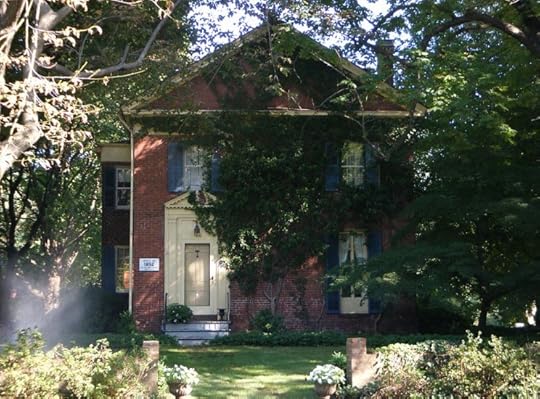 First Church Parsonage Windsor CT by Grondemar. CC-BY-SA-3.0 via Wikimedia Commons.
First Church Parsonage Windsor CT by Grondemar. CC-BY-SA-3.0 via Wikimedia Commons. The US Constitution empowers federal courts to hear “Cases” and “Controversies.” Over the years, the federal courts have elaborated the Constitution’s “case or controversy” test to require what has become known as “standing.” Among other elements, such standing necessitates that a plaintiff have experienced “personal and individual” injury rather than a generalized grievance shared with others.
In dismissing the FFRF challenge to the parsonage allowance provisions of the Internal Revenue Code, the Court of Appeals for the Seventh Circuit held that the plaintiffs did not meet this exacting standard of personalized injury. As a procedural matter, the plaintiffs had not asked the IRS to exclude from their respective gross incomes the housing allowances paid to them by their secular employer. Hence, in formal terms, the plaintiffs had no individualized injury and thus no standing to pursue their lawsuit.
The FFRF plaintiffs can now ask the IRS to exclude their housing allowances from their gross incomes and, when refused such favorable treatment, can commence their litigation again in the federal courts. Alternatively, FFRF can restart this litigation in the state courts where the tests for standing are generally more liberal than in the federal courts.
FFRF originally began its challenge to the Code’s parsonage allowance provision as a federal case in the US District Court for Eastern District of California. FFRF then refiled its litigation in the US District Court for the Western District of Wisconsin, where the FFRF plaintiffs prevailed on the merits. From there, the case went to the US Court of Appeals for the Seventh Circuit which has now ordered the case dismissed for lack of standing.
In terms of statutory law and case law, the standing rules for California’s state courts are among the most liberal in the nation. The case law of Wisconsin similarly opens the door to that state’s courts in contrast to the less welcoming standing tests of the federal courts.
California’s and Wisconsin’s respective income taxes include benefits for clerical housing allowances identical to Code Section 107. Thus, any constitutional deficiency of the federal exclusion also applies to the equivalent state income tax exclusions of parsonage allowances. So why didn’t FFRF start its litigation against the parsonage allowance in the California or Wisconsin state courts in the first place, rather than resorting to the federal courts located in those states?
Perhaps the FFRF litigants thought that a state court’s constitutional invalidation of that state’s parsonage allowance exclusion would be insufficiently influential. Or perhaps FFRF’s lawyers concluded that elected state court judges would be less receptive to their challenge than life-tenured federal judges.
In any event, FFRF says that its procedural defeat in the Seventh Circuit will not deter additional litigation concerning the alleged unconstitutionality of the favorable tax income treatment extended to parsonage allowances. Whatever the reason the FFRF lawyers chose to proceed in the federal courts, they must now be considering the advisability of litigating their concerns in the state courts, with more generous tests for standing.
On the substantive merits, I disagree with FFRF that the income tax exclusion for clerical housing allowances violates the First Amendment. As I have discussed in the Cardozo Law Review, that exclusion has both secular purpose and secular effect: In constitutional terms, Code Section 107 is a permissible (though not required) attempt to minimize the church-state entanglement which would result from taxing such allowances. While there are strong tax policy arguments against Section 107(2), those arguments don’t make that section unconstitutional.
In light of FFRF’s determination to keep litigating, it is likely a matter of time before this substantive constitutional issue will be addressed in one or more state courts with more liberal procedural rules for standing.
The post The parsonage allowance and standing in the state courts appeared first on OUPblog.









 Related StoriesIncome inequality in the United StatesThe Oxford Place of the Year 2014 is…World AIDS Day reading list
Related StoriesIncome inequality in the United StatesThe Oxford Place of the Year 2014 is…World AIDS Day reading list
The Oxford Place of the Year 2014 is…
As voting for the shortlist came to a close, Scotland took home the title of Oxford’s Place of the Year 2014. This country of the United Kingdom came into spotlight this year when a referendum asked whether Scotland should be an independent country.
But what happened in September wasn’t Scotland’s first effort to break away from the United Kingdom. Back in 1979, the majority of Scottish residents were in favor of devolution, which would pass the powers of the Parliament of the United Kingdom over to the Scottish Assembly. However, despite the public favoring this move, only 32.9% of the electorate voted “Yes” to this referendum.
Then Scotland appealed for power again. In 1997, the second devolution referendum made way for the formation of the Scottish Parliament, which effectively gave Scotland control of its domestic policy. At an overwhelming majority nearing 75% of citizens and 45% of electorates in favor, the Scottish Parliament was established and held its debut session in July 1999.
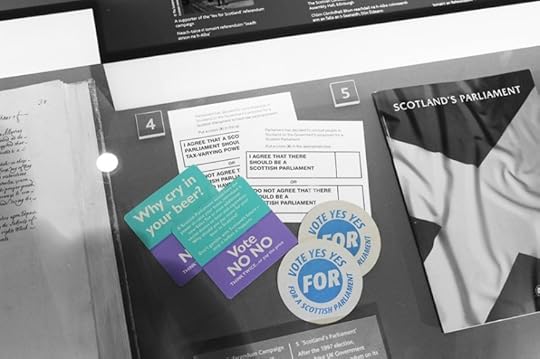 Holyrood – Parliament of Scotland. Photo by lbpyles. CC BY-ND 2.0 via Flickr.
Holyrood – Parliament of Scotland. Photo by lbpyles. CC BY-ND 2.0 via Flickr. After surpassing the other shortlist contenders — Ukraine, Brazil, Ferguson, and Colorado — Scotland undoubtedly marked the history books despite the referendum failing to pass. But as evident in Scotland’s history, this probably won’t be the last we hear of them.
Read up on our Place of the Year archive, and remember to check back for more posts about Scotland. Let us know what you think of this year’s Place of the Year in the comments below.
Featured headline image: Calton Hill. CC0 Public Domain via Pixabay.
The post The Oxford Place of the Year 2014 is… appeared first on OUPblog.









 Related StoriesPlace of the Year 2014 nominee spotlight: Scotland [quiz]Announcing the Place of the Year 2014 shortlist: Vote for your pickPlace of the Year 2014 nominee spotlight: Ukraine
Related StoriesPlace of the Year 2014 nominee spotlight: Scotland [quiz]Announcing the Place of the Year 2014 shortlist: Vote for your pickPlace of the Year 2014 nominee spotlight: Ukraine
One second in the life of an artist
The riveting film, The Artist and the Model (L’Artiste et son Modèle) from Spain’s leading director, Fernando Trueba, focuses on a series of “one seconds” in the life of French sculptor Marc Cross.
The film director transfers himself into his protagonist, played brilliantly by Jean Rochefort, to explore what serves as inspiration for an artist. “An idea,” says the sculptor as he shares with his young model a sketch made by Rembrandt of a child’s first walking steps. “It is the tenderness of the sketch,“ the “one second of an idea,” that Marc Cross searches for to unblock his aging loss of creativity.
And it is the sculptor’s wife, played by beautiful Claudia Cardinale, who will find this “idea” for him. She will save him, help him create.
In one second, the “good wife” sees a driftless girl in their town, sleeping on the ground at a doorstep. She knows nothing about this vagabond who has found her way to their small French village at the Pyrenees’ border with Spain. The only thing the wife knows is that this homeless, hungry girl, wrapped in a bulky, woolen coat, has a face and body that her husband would love to sculpt. This street urchin could become his inspiration. Claudia Cardinale brings the girl home, shelters and feeds her, and teaches Mercè (Aïda Folch) how to pose.
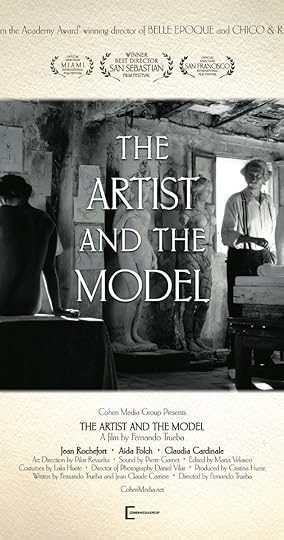
After weeks of sketches and small sculptures, in one second, by chance, the sculptor sees his model in a new position, resting. It is the angle of her arm, the tilt of her head, her leaning down to reflect that gives him “his idea.” He sees in one second before him, a girl who has become a beautiful woman. Marc Cross realizes his model is thinking of the War, worrying about the people she has been transporting secretly during the night to both sides of the Pyrenees. They are “Jews, Resistance, anyone,” who want to escape German-occupied France of 1943-44, as well as from Franco’s military dictatorship of Spain.
In that one second, the sculptor feels her sensitivity, her attempts to do what is right. He sees her in a different light and feels her soul. She has become more than a body or model. He feels in one second that she is Beauty, Art. It is what the artist has been searching for. With tenderness and love, he sculpts his final masterpiece.
When his work is coming to an end, so is the War. The girl leaves to model for another, perhaps Matisse in Nice, as she bikes to the Riviera with a letter of introduction. At this time, the sculptor’s wife leaves him for a few days to care for her sick sister. It is not a coincidence that this is his moment, his one second, to create the most courageous act of all. And he does, with the beautiful finished sculpture of the woman in his garden — surrounded by perfect light and birds chirping – giving him peace.
The Artist and the Model speaks to an age when all men and women search for one second of Hope.
Headline image credit: Still of Jean Rochefort and Aida Folch in The Artist and the Model (2012). © 2013 – Cohen Media Group via IMDB
The post One second in the life of an artist appeared first on OUPblog.









 Related StoriesWorld AIDS Day reading listThe not so thin blue line: policing economic crimeBack to the future with the ASC’s new Division of Policing
Related StoriesWorld AIDS Day reading listThe not so thin blue line: policing economic crimeBack to the future with the ASC’s new Division of Policing
World AIDS Day reading list
World AIDS Day is a global campaign that raises awareness and funds for the estimated 34 million people living with HIV, and also commemorates the 35 million people who have died of the virus. The first one was held in 1988 and, as such, it is the longest running health day. Despite many medical advances, HIV remains one of the most devastating epidemics in human history. The search for a cure or vaccine for HIV continues, with new discoveries being published all the time. We’ve created a reading list of journal articles and books so that you can read some of the latest, cutting-edge texts on the subject:
‘Diagnosing acute and prevalent HIV-1 infection in young African adults seeking care for fever: a systematic review and audit of current practice‘, published in International Health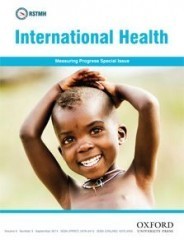
This article investigates the extent to which HIV-1 infection is considered in the diagnostic evaluation of febrile adults in sub-Saharan Africa (SSA) through a systematic review of published literature and guidelines in the period 2003–2014.
‘Delivering TB/HIV services in Ghana: a comparative study of service delivery models‘, published in Transactions of the Royal Society of Tropical Medicine & Hygiene
Three hospitals with different delivery models were identified and a survey of TB cases registered between June 2007 and December 2008 conducted.
‘HIV and HIV treatment: effects on fats, glucose and lipids‘, published in British Medical Bulletin
This review provides a brief summary of our current understanding of the epidemiology, clinical presentation and therapeutic approaches of what is termed ‘the HIV-associated lipodystrophy syndrome’ and of HIV-associated lipid and glucose metabolic abnormalities.
‘Increased Morbidity in Early Childhood Among HIV-exposed Uninfected Children in Uganda is Associated with Breastfeeding Duration’, published in Journal of Tropical Pediatrics
Studies in Sub-Saharan Africa have shown that HIV-exposed uninfected children (HEU) have an increased risk of morbidity and mortality compared with HIV-unexposed uninfected children (HUU). This article looks at how breastfeeding affects the relationship between HIV-exposure and morbidity and mortality.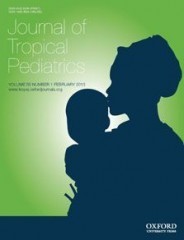
‘Randomized community-level HIV prevention intervention trial for men who drink in South African alcohol-serving venues’, published in European Journal of Public Health
South African alcohol-serving establishments (i.e., shebeens) offer unique opportunities to reduce HIV risks among men who drink. Read the study in full
‘Primary Effusion Lymphoma (PEL) in the absence of HIV infection – Clinical presentation and management’, published in QJM
To clarify treatment issues in HIV-negative PEL patients, this report looks at two such patients who represent two opposing ends in the spectrum of treatment and review the literature regarding treatment options and patient outcomes.
‘Early diagnosis and treatment of HIV infection: magnitude of benefit on short-term mortality is greatest in older adults’, published in Age and Ageing
The number and proportion of adults diagnosed with HIV infection aged 50 years and older has risen. This study compares the effect of CD4 counts and anti-retroviral therapy (ART) on mortality rates among adults diagnosed aged ≥50 with those diagnosed at a younger age.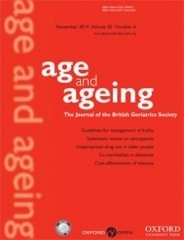
‘Attitudes about providing HIV care: voices from publicly funded clinics in California’, published in Family Practice
As the enactment of health care reform becomes a reality in the USA, it has been widely predicted that HIV+ patients will increasingly be cared for by primary care physicians (PCPs), many of whom lack the experience to deliver full-spectrum HIV care.
‘Community-based family-style group homes for children orphaned by AIDS in rural China: an ethnographic investigation’, published in Health Policy and Planning
As the number of children orphaned by AIDS (Acquired Immunodeficiency Syndrome) has reached 17.3 million, most living in resource-poor settings, interest has grown in identifying and evaluating appropriate care arrangements for them.
‘Physician communication behaviors from the perspective of adult HIV patients in Kenya’, published in International Journal for Quality in Health Care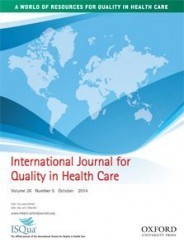
This study looks at the perceived physician communication behaviors and its association with adherence to care, among HIV patients in Kenya.
‘Glycodendrimers prevent HIV transmission via DC-SIGN on dendritic cells’, published in International Immunology
The authors design molecules that bind dendritic cells and block HIV-1 binding, thereby stopping transport to CD4+ T cells and preventing virus transmission.
‘Clinical Outcomes of AIDS-related Burkitt Lymphoma: A Multi-institution Retrospective Survey in Japan’, published in Japanese Journal of Clinical Oncology
Highly intensive chemotherapy would bring a high remission rate and prolonged overall survival for patients with AIDS-related Burkitt lymphoma.
‘Interview with Dr. Deborah Cotton about HIV Treatment and the Early Years of the Epidemic’, published in Open Forum Infectious Diseases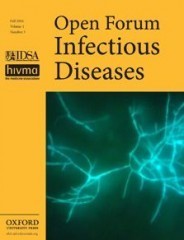
In this podcast, Editor-in-Chief Paul Sax, MD, speaks with colleague Deborah Cotton, MD, MPH, about the recent OFID article “A Glimpse of the Early Years of the Human Immunodeficiency Virus Epidemic: A Fellow’s Experience in 2014.” Drs. Sax and Cotton compare their experiences in Boston with those of the authors at Atlanta’s Grady Hospital, which still cares for a large number of patients with untreated HIV
‘Improvements in HIV Care Engagement and Viral Load Suppression Following Enrollment in a Comprehensive HIV Care Coordination Program’, published in Clinical Infectious Diseases
Gaps in the HIV care continuum jeopardize the success of the National HIV/AIDS Strategy. A pre-post analysis of 1-year outcomes among New York City Ryan White Care Coordination clients demonstrated improvements in HIV care engagement and viral suppression.
‘Frailty in People Aging With Human Immunodeficiency Virus (HIV) Infection’, published in The Journal of Infectious Diseases
The increasing life spans of people infected with HIV reflect enormous treatment successes and present new challenges related to aging. This review explains how frailty has been conceptualized and measured in the general population, critically reviews emerging data on frailty in people with HIV infection, and explores how the concept of frailty might inform HIV research and care.
‘Factors Associated With Retention Among Non–Perinatally HIV-Infected Youth in the HIV Research Network’, published in Journal of the Pediatric Infectious Diseases Society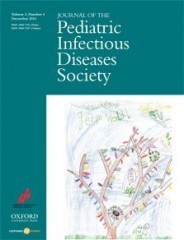
The transmission of HIV among youth through high-risk behaviors continues to increase. Retention in care is associated with positive clinical outcomes and a decrease in HIV transmission risk behaviors, but this retrospective analysis shows alarmingly high proportions of newly enrolled non-perinatally HIV-infected youth were not retained.
‘Sex differences in atazanavir pharmacokinetics and associations with time to clinical events: AIDS Clinical Trials Group Study A5202′, published in Journal of Antimicrobial Chemotherapy
This new research from the Journal of Antimicrobial Chemotherapy examines whether HIV-1 antiretroviral exposure and clinical response varies between males and females. The study of 786 participants revealed that average atazanavir clearance was slower in females than males.
Oxford Textbook of Medicine, edited by David A. Warrell, Timothy M. Cox, and John D. Firth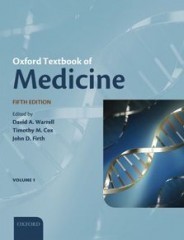
Giving an unparalleled integration of HIV/AIDS basic science and clinical practice, this chapter is taken from the Oxford Textbook of Medicine, the most comprehensive, authoritative, and international medical textbook available.
Oxford Handbook of Genitourinary Medicine, HIV, and Sexual Health, edited by Richard Pattman, Nathan Sankar, Babiker Elawad, Pauline Handy, and David Ashley Price
Taken from the Oxford Handbook of Genitourinary Medicine, HIV, and Sexual Health, this chapter provides evidence based, practical information on HIV/AIDS and details the pathogenesis of HIV infection.
Fitness For Work, edited by Keith T Palmer, Ian Brown, and John Hobson
Comprehensive coverage of occupational health issues relating to HIV. While antiretroviral treatment (ART) has increased survival, many HIV-infected people remain symptomatic, either through drug side effects, HIV-related illnesses, or the psychological morbidity associated with the diagnosis and disease. All of these factors can have a significant effect on an individual’s ability to find, and remain in, work.
Oxford Handbook of Tropical Medicine, edited by Andrew Brent, Robert Davidson, and Anna Seale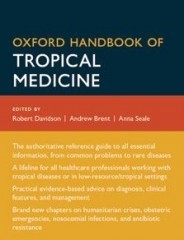
This guide to HIV is from the Oxford Handbook of Tropical Medicine, a definitive resource for medical problems in tropical regions, and low-resource countries. Covering diagnosis and associated diseases, through to treatment and prevention strategies, this chapter is a comprehensive guide to clinical practice.
Challenging Concepts in Infectious Disease, edited by Amber Arnold and George Griffin
Part of a compendium of challenging cases, this chapter examines prevention of mother-to-child HIV transmission in a case where a 26-year-old Nigerian lady presented with a week-long history of worsening fever, cough, and shortness of breath. She was 28 weeks into her first pregnancy, which had otherwise been uneventful and had included a negative routine antenatal test for HIV at 12 weeks’ gestation.
Virus Hunt, by Dorothy H. Crawford
The hunt for the origin of the AIDS virus began over twenty years ago. It was a journey that went around the world and involved painstaking research to unravel how, when, and where the virus first infected humans.
The Aids Generation, by Perry Halkitis
Perry Halkitis narrates a story of HIV survival, based on his interviews with the AIDS Generation, those gay men who came of age at the onset of the epidemic, prior to any effective treatments. This chapter provides a historical and epidemiological background of the HIV/AIDS epidemic as it has manifested itself over the last three decades.
African Health Leaders, edited by Francis Omaswa and Nigel Crisp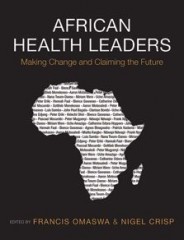
Written by Africans, who have themselves led improvements in their own countries, the book discusses the creativity, innovation and leadership that has been involved tackling everything from HIV/AIDs, to maternal, and child mortality and neglected tropical diseases.
Featured image credit: World AIDS Day, White House, by tedeytan. CC-BY-SA-2.0 via Flickr.
The post World AIDS Day reading list appeared first on OUPblog.










 Related StoriesA reading list for European Antibiotics Awareness DayLeonard Cohen and smoking in old ageIvan Pavlov in 22 surprising facts
Related StoriesA reading list for European Antibiotics Awareness DayLeonard Cohen and smoking in old ageIvan Pavlov in 22 surprising facts
Oxford University Press's Blog
- Oxford University Press's profile
- 238 followers



